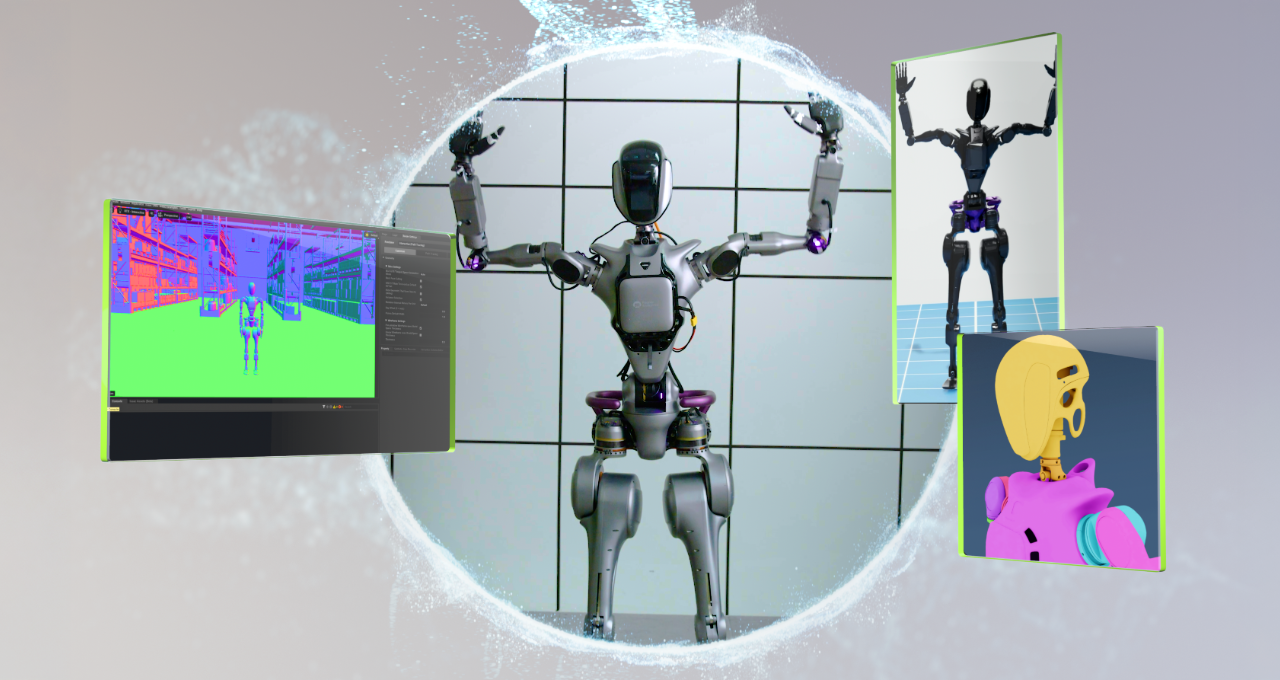lifehacker.com
On Wednesday, Apple officially revealed the iPhone 16e, the spiritual successor to the iPhone SE. While the second and third-generation SEs borrowed from the design language of the iPhone 8, this new iPhone looks just like an iPhone 14. There are a lot of perks that come with that decision, but in doing so, Apple has also done something pretty drastic: It has officially killed off the Home button.With the launch of the iPhone 16e, no iPhone, nor any iPad Apple currently sells, ships with a Home button. (The iPod touch was killed off a long time ago.) This is, definitively, the end of an era, and I come not to mourn the Home button, but to praise it. Let's take a look at the life of Apple's Home buttonwhat it did right, what it did wrong, and where we go from here. A brief history of the Home buttonWhen Steve Jobs introduced the iPhone in 2007, a lot of attention was given it its "giant" touch screenas Jobs described the iPhone's 3.5-inch display. But while touch controls certainly stole the spotlight, it wasn't the iPhone's only unique feature to get a shoutout. Here's what Jobs had to say when addressing the Home button for the first time: "And on the front, there's only one button down there. We call it the 'Home' button: [It] takes you home from wherever you are." And at that point in time, that's all the Home button did. Want to leave an app? Hit the Home button. Welcome home. But that simplicity didn't last forever. Very quickly, simply clicking the Home button to go home wasn't enough: Users expected more from their smartphones, and Apple had to adapt. One of the first non-home functions of the Home button was to take screenshots. Anyone who has used an iPhone with a Home button knows how it works: You press the Sleep/Wake button and the Home button together, and presto: screenshot. (The functionality on today's Face ID iPhones is similar, but now you use the Side button with the Volume up button.) All of a sudden, the Home button had more than one purpose. Next came Voice Control. Not Siri, mind you: Voice Control is a rudimentary version of Siri that launched on the iPhone 3GS in 2009. (Fun fact: It still exists on iOS!) As you might expect, to activate Voice Control, you hold down the Home button, wait for the Voice Control UI to appear, then ask it to complete a task (e.g. "Call Mom," or "play a song.") With the release of iOS 4 in 2010, Apple introduced app switching: By clicking the Home button twice, you could reveal a new menu at the bottom of your screen with all of your recently-used apps. Tap one, and you could switch to it, without needing to go to your Home Screen first to find the app you were looking for. Of course, the real revolution came in 2011, with the iPhone 4S and Siri. Apple took the Voice Command control and assigned it to Siri. With a long-press of the Home button, you could call upon the digital assistant to help answer questions and complete tasks. (The utility of asking Siri to do anything has been a point of contention ever since.) The Home button's next milestone came with the iPhone 5s. For this model, Apple outfitted the button with a fingerprint reader. It was the era of Touch ID. Gone was the iconic rounded square icon in the center of the Home button, replaced by solid glass. Users could now scan their fingerprints using the button and unlock their iPhones without having to punch in a passcode. Perhaps the Home button's final development was when it ceased to be a true button at all. With the iPhone 7 series, Apple replaced the physical button with a capacitive one. Just as with its MacBooks, a Taptic Engine underneath the bottom bezel of the iPhone provides a clever vibration each time you "press" on the button. In effect, it creates the illusion a click, even though the "button" never moves at all. (There was nothing quite like the feeling of the Home button going dead when your iPhone ran out of charge at the worst possible moment.) A new player in townFor a number of years, the Home button was a key component of most Apple productsminus the Mac. Whether you bought an iPhone, iPad, iPod touch, even a particular iPod nano, you were using a Home button. But nothing lasts forever.The Home button took up a lot of screen real estate, if you recall: As other smartphones pushed their displays to the edge of the device, the iPhone still sported the same general design for about 10 years. Sure, the overall device looked different, and the screens got much larger, but the display was still sandwiched between a large top and bottom bezelthe latter of which held the Home button. When Apple was looking to overhaul the iPhone's design for the iPhone X while pushing the display to its physical limits, there was only one thing to do: nix the Home button. The iconic button was pushed out, in favor of Face ID, so Apple could present its "10th anniversary iPhone" with an edge-to-edge (-ish) display. The iPhone 8 (left) vs. the iPhone X (right). Credit: Marques Brownlee/YouTube The Home button wasn't totally eliminated, of coursealong with the iPhone X, Apple released the iPhone 8 and 8 Plus, which included the same capacitive Home button as the iPhone 7 and 7 Plus. But by the following year, Apple's entire lineup of flagship phonesthe iPhone XS, XS Max, and XRhad all ditched the Home button.Since then, only the iPhone SE line has offered a Home buttonat least in the iPhone space. Apple kept the Home button alive on iPad for a while, until the third-generation iPad Pro (2018), fourth-generation iPad Air (2020), sixth-generation iPad mini (2021), and 10th-generation iPad (2022). And as of the iPhone 16e, the Home button is gone from Apple's lineup. What the Home button got rightIt's not that gesture controls aren't greatthey are! Swiping around iOS feels intuitive and, in many ways, is objectively better than getting around using the Home button. But the Home button had some undeniable perks. It's tough to remember for those of us with Face ID iPhones, but there was a time when it was much simpler to unlock your iPhone in the morning without resorting to using your passcode. You didn't need to contort your face in the right position away from your pillow in order to authenticate yourself: Touch ID works however you're lying down. (Touch ID also works when your face is all puffy from sleep.) That ease extends to however you unlock your iPhone: As long as you can physically touch the Home button with the correct fingerprint, you're in. Just try to unlock a Face ID iPhone while it's resting on your desk without moving your face towards it. And don't get me started on what it was like unlocking a Face ID iPhone while wearing a mask during the pandemic: Before Apple issued an update making it easier, that was a nightmare.More simply, the Home button was a button, and buttons are great! Devices in general seem to be moving away from buttons in favor of touch or voice controls, and while those can certainly be effective, physical buttons are kind of the best. There's a satisfaction in clicking something and seeing an action as a result. Swiping is perfectly fine: I'm used to swiping up to go home, or swiping up and over to access my app switcher. But clicking once to go home, or clicking twice to pull up my open apps, still works really wellas does clicking the button without purpose, just because it's there. You could also have some fun with the Home button that you can't with Face ID. Touch ID settings let you save five fingerprint scans on each device, but most of us have ten fingers. So, when setting up each fingerprint, you'd alternate fingers until a scan was completewhich effectively registeredtwo fingers on one scan. Repeat that five times, and you could use any finger to authenticate yourself. (This still works on Macs with Touch ID.) What the Home button left to be desiredHere's the problem with buttons, though: they can break. I never had a Home button break on me, but plenty of others did, for one reason or another. And if your Home button broke, it was a real pain in the ass. It's possible to fix a Home button yourselfiFixit sells a kit at a reasonable pricebut if you want Touch ID to keep working, you need to take it to the Apple Store, which will likely charge you hundreds of dollars for the privilege.While Touch ID is superior to Face ID in some ways, it falls short in many others. Are your hands wet? Your fingerprint will not scan until they're dry. Do you suffer from dry skin in the winter? Ge used to using your passcode for a few months. Wearing gloves? Better take them off. Not to mention, Face ID is way more secure than Touch ID, at least according to Apple: The company claims the former has less than a one in a million chance of unlocking when someone else uses your phone, while Touch ID has a one in 50,000 chance of the same failure. The extra screen real estate the removal of the bottom bezel affords is also an undeniable plus. The largest Home button iPhone had a 5.5-inch display, while the smallest Face ID iPhone Apple currently sells has a 6.1-inch display. It's hardly a contest. I will say, I don't see those advantages for watching videos: I don't like cropping out my content to fill my iPhone's display, so on a Pro Max iPhone, the overall video size is about the same as it would be on, say, an 8 Plus. But for everything else on iOS? Those bezels are hardly missed.Don't call the coroner yetThe Home button may be gone from Apple's lineup, but it won't soon be forgotten. It was an iconic attribute of the iPhone for the first 10 years of the product's life: Many phones had a similar design to the iPhone, but only one had that distinct rounded Home button.It also isn't dead. There are still plenty of Home button iPhones in use right now. Apple still supports the second and third-generation iPhone SE, as well as a number of Home button iPads, so the company will still need to keep Home buttons in mind when developing its software for some time. And while Apple itself won't sell you a new iPhone with a Home button, you can still easily buy one elsewhere. You can find new and used iPhone SEs through many retailers, and while I wouldn't recommend doing so if you care about your device's longevity, you can even pick up a used iPhone 8 or 8 Plus for less than $100. The point is, for a long time, the Home button mattered. And until Apple drops support for all Home button devices entirely, it still does.












